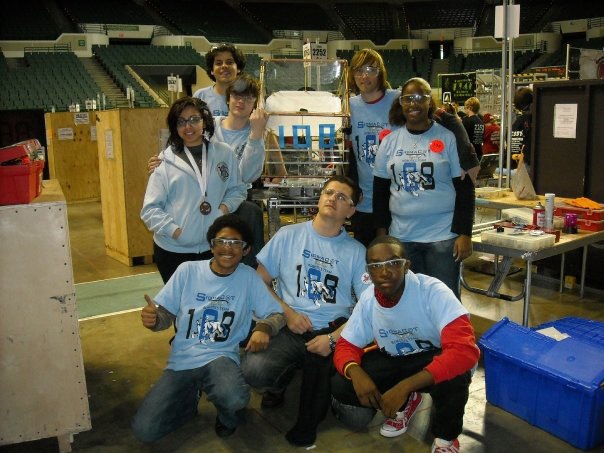Life is marked by defining moments – just ask Daniel Collotte, whose team took third place in the 2014 TI Innovation Challenge North America Design Contest (TIIC) for his Universal Interface Cube, which replaces the need for multiple remote controls and simplifies the process of switching between different electronics in a home entertainment system. A senior in electrical engineering at the University of Florida at the time, Daniel said, “Winning was the biggest thing that had happened in my life to that point.”
Daniel discovered he had a passion for technology at an early age. He started competing in the BEST (Boosting Engineering, Science, and Technology) robotics competition in middle school, launched in 1993 by two TI engineers, and then participated in FIRST (For Inspiration and Recognition of Science and Technology) in high school. Although a member of the software team, he also worked on the electronics side. In his senior year of high school, upon seeing so many others planning to pursue software in college, he decided to go into electrical engineering as way to differentiate himself professionally.

Daniel with his robotics team at the FIRST 2009 competition.
Entering TIIC
Daniel was quick to jump on the chance to enter the TIIC when it came time for his senior design project in college. Unlike robotics, he wanted to create something personally useful. “There are a lot of different robots that you can build for a school project, but they’re not something you could really take home and use every day,” he said.
After much brainstorming, he landed on the idea for the Universal Interface Cube, with his mom in mind as a potential user. “My mom just wants to know enough to make electronic equipment work,” he said. “I can recall helping her set up the TV and DVD, struggling through the various settings. I thought, ‘What if she had a device that would automatically do it for her?’”
 A prototype of the the Universal Interface Cube.
A prototype of the the Universal Interface Cube.
Daniel teamed up with Kevin Runda, also an electrical engineering major, to develop the design, which consisted of the cube, a remote unit, a charging station and an IR node. “We sat down with a blank piece of paper and drew out our block diagram, trying to think through all of the necessary components and connections,” Daniel said. They mutually agreed to use TI MSP430 microcontrollers to drive the cube, taking advantage of their low-cost and low-power usage and the opportunity to prototype software using MSP430 LaunchPads prior to finalizing the hardware. “We didn’t want to change the batteries all the time,” he said. “And low-cost was a big benefit because as students we tend to break things!”
 Daniel and Kevin pose with their winning design during the TIIC final competition.
Daniel and Kevin pose with their winning design during the TIIC final competition.
The students also relied on TI’s search engine to help identify other necessary components, and Daniel added that the extreme ease in which they could sample parts from TI and, in the case of the remote, the availability of a graphics library, were also immensely helpful.
How it works
When placed on top of a desired device, the Universal Interface Cube turns the device on and configures any additional devices. (See the cube in action here.) For instance, if the cube is placed on an Xbox 360, it will turn it on, along with the TV, configuring the audio and video receiver to the appropriate HDMI input. The LCD remote will update to turn itself into a controller for the device in use.
The Universal Interface Cube knows where it has been placed by reading Radio Frequency Identification (RFID) stickers attached to the electronic devices. Once the cube identifies its placement, it transmits a sequence of commands to an IR node using 2.4GHz radio frequency communications, which converts the RF commands to IR commands. Along with using the MSP430G2413 and MSP430F5529 MCUs, TI circuitry was utilized for switching, regulation, battery charging and power path management. For more details on the design, visit the TI University Student Repository.
What’s next?
Today, Daniel is a digital hardware engineer at National Instruments, where he designs and tests products and circuit boards. “I’m doing the same thing I did in my senior design project,” he said, emphasizing that the TIIC experience helped him professionally because it gave him the experience of creating something. It also fueled the Maker in him to continue innovating. “I still do projects on my own, working with electrical test equipment in my home and ‘tinkering’ whenever I can on potential ideas for Kickstarter,” said Daniel.
Do you think your senior project is a winning design? It’s not too late to enter the TI Innovation contest. Projects are due May 24, 2015, so enter today!
